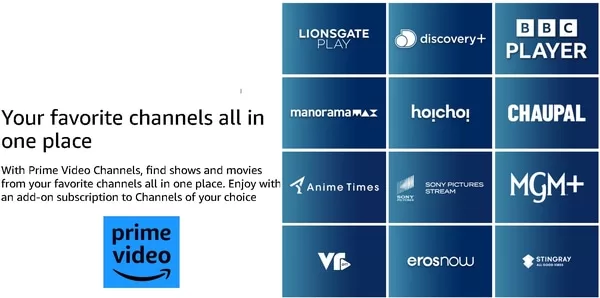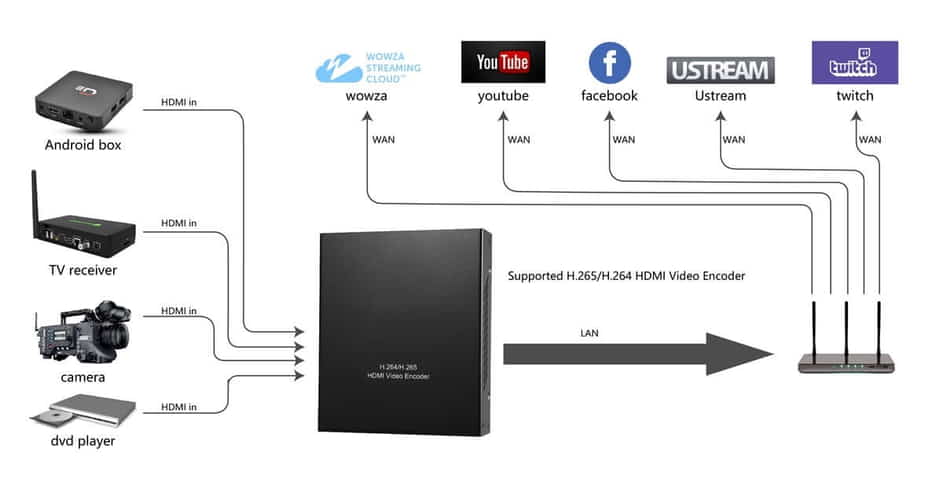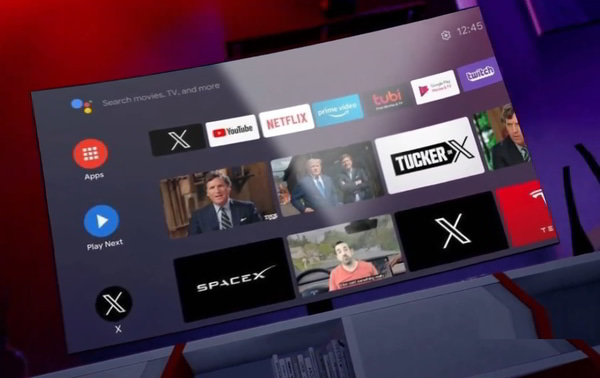You must have seen new or used speakers or home theaters being sold in the market or on classified websites. On which the logo of Dolby is also made. So does just having the Dolby logo get you the latest Dolby technology? No, not at all.
Here we are telling you about some of the major technologies of Dolby below so that you can understand a little bit about the Dolby logo made on that product, and you know what you are buying and what you will get in it.
Dolby A (1965):
Dolby A is an analog noise reduction system that improves the dynamic range and signal-to-noise ratio of analog audio recordings. It was mainly used in professional recording studios.
Dolby B (1968):
Dolby B is another analog noise reduction system that reduces tape hiss in cassette recordings. It was mainly used in consumer audio cassette decks.
Dolby C (1980):
Dolby C is an enhanced version of Dolby B that provides better noise reduction for high-frequency signals. It was mainly used in higher-end consumer audio cassette decks.
Dolby SR (1986):
Dolby SR is a professional noise reduction system that provides superior sound quality in motion picture soundtracks. It reduces noise and distortion in audio recordings and playback.
Dolby HX Pro (1988):
Dolby HX Pro is a tape headroom extension system that improves the high-frequency response of cassette recordings. It provides clearer and more detailed sound quality.
Dolby Digital (AC-3) (1992):
Dolby Digital is a digital audio coding system that compresses audio signals for transmission and storage. It provides high-quality multichannel audio for home theater systems and digital broadcasting.
Dolby Surround (1993):
Dolby Surround is a matrix encoding system that provides a surround sound experience from a two-channel source. It creates a surround sound field by steering sounds to different speakers.
Dolby Spectral Recording (SR) (1995):
Dolby SR is a professional noise reduction system that provides superior sound quality in motion picture soundtracks. It reduces noise and distortion in audio recordings and playback.
Dolby Pro Logic (1995):
Dolby Pro Logic is a matrix decoding system that provides surround sound from a Dolby Surround-encoded source. It separates the audio signals into four channels: left, center, right, and surround.
Dolby Digital Surround EX (1999):
Dolby Digital Surround EX is an enhanced version of Dolby Digital that adds an extra surround back channel for improved surround sound. It provides a more immersive audio experience. Dolby Digital Surround EX is an extension of the Dolby Digital format that adds an additional rear center channel for a 6.1-channel surround sound experience. It was later succeeded by the Dolby Digital Plus format.
Dolby Pro Logic II (2000):
Dolby Pro Logic II is an enhanced version of Dolby Pro Logic that provides more accurate and natural-sounding surround sound. It separates audio signals into five channels: left, center, right, left surround, and right surround. Dolby Pro Logic II is a matrix decoding technology that converts any stereo or 5.1-channel audio source into a surround sound experience with up to 7.1 channels. It also has a Music mode that enhances stereo music by creating a surround sound effect.
Dolby Headphone (2000):
Dolby Headphone is a virtual surround sound system that provides a surround sound experience through stereo headphones. It creates a more immersive audio experience for movies, music, and games. Dolby Headphone is a technology that creates a virtual surround sound experience using any standard pair of headphones. It simulates the effect of speakers placed in different positions to create a 5.1 or 7.1-channel surround sound effect.
Dolby Virtual Speaker (2002):
Dolby Virtual Speaker is a virtual surround sound system that provides a surround sound experience through a single speaker. It creates a more immersive audio experience for movies, music, and games. Dolby Virtual Speaker is a technology that creates a surround sound effect using a two-speaker stereo system. It uses psychoacoustic processing to simulate the effect of multiple speakers placed in different positions.
Dolby Digital Plus (2005):
Dolby Digital Plus is an advanced version of Dolby Digital that provides higher-quality multichannel audio for streaming, broadcasting, and home theater systems. It supports up to 7.1 channels and higher bitrates. Dolby Digital Plus is an advanced version of the Dolby Digital format that supports up to 7.1-channel surround sound and higher bitrates for improved audio quality. It is commonly used for streaming and broadcasting.
Dolby TrueHD (2006):
Dolby TrueHD is a lossless audio codec that provides high-quality multichannel audio for Blu-ray discs, streaming, and broadcasting. It supports up to 7.1 channels and higher bitrates. Dolby TrueHD is a lossless audio format that supports up to 7.1-channel surround sound and high-resolution audio up to 24-bit/192kHz. It is commonly used for Blu-ray discs and other high-quality audio sources.
Dolby Volume (2007):
Dolby Volume is a volume leveling system that provides a consistent and comfortable listening experience across different audio sources. It reduces the volume differences between different channels and programs. Dolby Volume is a technology that maintains a consistent volume level across all sources and content. It analyzes audio content in real time and adjusts the volume to avoid sudden changes and loud commercials.
Dolby Mobile (2010):
Dolby Mobile is a suite of audio technologies that enhance the sound of mobile. Experience natural sound from 3.5mm 2 channel to virtualization. Dolby Mobile is a technology that enhances the audio quality on mobile devices such as smartphones and tablets. It provides virtual surround sound, improved bass response, and a more natural listening experience.
Dolby Advanced Audio – 2011:
Dolby Advanced Audio is a suite of technologies that provides a high-quality audio experience on laptops and desktop computers. It includes technologies such as Dolby Digital Plus, Dolby Headphone, and Dolby Virtual Speaker.
Dolby Atmos – 2012:
Dolby Atmos is an object-based audio technology that creates a 3D sound experience with up to 64 individual speaker channels. It allows sound designers to place individual sounds in specific locations in a 3D space for a more immersive audio experience.
Dolby Audio – 2012:
Dolby Audio is a suite of technologies that provides high-quality audio for a wide range of devices, including TVs, smartphones, and tablets. It includes technologies such as Dolby Digital Plus, Dolby Volume, and Dolby Virtual Speaker.
Dolby Vision – 2014:
Dolby Vision is a high-dynamic range (HDR) video technology that provides a wider range of colors and brightness levels for improved image quality. It uses dynamic metadata to adjust the brightness and contrast on a scene-by-scene basis for a more realistic viewing experience. Dolby Vision is a high-dynamic range (HDR) video format that delivers brighter highlights, deeper blacks, and a wider range of colors compared to standard dynamic range (SDR) video. It is used in TVs, projectors, and other display devices. Dolby Vision is compatible with a variety of video codecs, including H.264, H.265, and VP9.
Dolby Cinema – 2015:
Dolby Cinema is a premium cinema experience that combines Dolby Vision and Dolby Atmos technologies for a high-quality audio and video experience. It includes technologies such as laser projection and reclining seats for a more immersive movie-watching experience. Dolby Cinema is a premium movie theater experience that combines Dolby Vision and Dolby Atmos technologies to create immersive audio and visual experiences. Dolby Cinema theaters have state-of-the-art laser projectors and custom-designed Dolby Atmos sound systems.
Dolby Voice – 2019:
Dolby Voice is a suite of audio technologies designed for conferencing and collaboration. It includes noise reduction, voice separation, and spatial audio technologies to create clearer, more natural-sounding conversations. Dolby Voice is compatible with a variety of conferencing platforms, including Zoom, Microsoft Teams, and Cisco Webex.
Dolby Atmos Music (2019) –
Dolby Atmos Music is a surround sound format designed for music streaming services. It creates a three-dimensional audio experience that allows listeners to hear music from all around them, including above and below. Dolby Atmos Music is available on a variety of platforms, including Tidal and Amazon Music HD.
Dolby On (2019) –
Dolby On is a mobile app that allows users to record high-quality audio using their phone or tablet. It includes noise reduction, EQ, and compression tools to create professional-quality recordings. Dolby On is available on iOS and Android.
Dolby AC-4 (2019) –
Dolby AC-4 is an audio codec designed for next-generation broadcast and streaming services. It includes support for object-based audio, which allows broadcasters to create immersive audio experiences that can be customized for individual listeners. Dolby AC-4 is backward compatible with Dolby Digital Plus and Dolby Digital. A next-generation audio codec designed for broadcast and streaming, with support for immersive audio, object-based mixing, and advanced metadata.
Dolby Atmos Height Virtualization (2020) –
Dolby Atmos Height Virtualization is a technology that allows users to experience the benefits of Dolby Atmos audio even if they don’t have a full 5.1.2 or 7.1.2 speaker setup. It uses advanced algorithms to create a virtual height layer in the audio mix, making it sound like sound effects and music are coming from above. A technology that enables virtualized height channels for Dolby Atmos content, allowing for a more immersive audio experience without the need for additional speakers.
Dolby Atmos for Music (2020) –
Dolby Atmos for Music is a version of Dolby Atmos designed specifically for music production and playback. It allows artists and producers to create immersive, three-dimensional audio experiences that can be played back on compatible devices and streaming services. A version of Dolby Atmos designed specifically for music content, allowing for immersive, object-based audio mixing and playback.
Dolby.io (2020) –
Dolby.io is a suite of APIs and SDKs that allows developers to integrate Dolby’s audio and video technologies into their applications. It includes support for noise reduction, spatial audio, and voice separation technologies. A cloud-based platform that provides developers with APIs and tools for integrating Dolby audio and video technologies into their applications and services. You can also download the DOLBY Record application online.
Dolby Atmos for Gaming (2021) –
Dolby Atmos for Gaming is a version of Dolby Atmos designed specifically for gaming. It allows gamers to experience immersive, three-dimensional audio that can help them pinpoint the location of in-game sounds, making it easier to react quickly and accurately. A version of Dolby Atmos designed specifically for gaming content, providing immersive, spatial audio for an enhanced gaming experience.
Dolby Atmos for Headphones (2021) –
Dolby Atmos for Headphones is a version of Dolby Atmos designed for use with headphones. It creates a virtual surround sound experience that makes it feel like the sound is coming from all around the listener, even though they are only wearing headphones. A version of Dolby Atmos designed for headphones, providing immersive, spatial audio for a more realistic and immersive listening experience.
Dolby Atmos Sound System (2021) –
Dolby Atmos Sound System is a suite of technologies designed for use in soundbars and other home audio systems. A scalable, object-based audio solution designed for cinemas, allowing for immersive, spatial audio playback with precise localization and movement of sounds.
Dolby Atmos for Home Entertainment (2021):
A version of Dolby Atmos designed for home theater systems, providing immersive, object-based audio for a more cinematic experience.
Dolby Atmos + (2021):
A new feature introduced by Dolby that enhances the audio experience of streaming content by optimizing the audio for different types of content, such as movies, music, and sports
Note: Dolby is the registered trademark and technology developed by Dolby Laboratories.
Disclaimer – The above-given information has been provided by learning from information available on public domains. For more clarity and doubt, you must contact product manufacturers.




